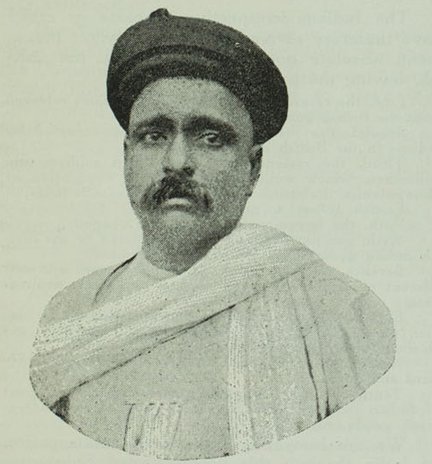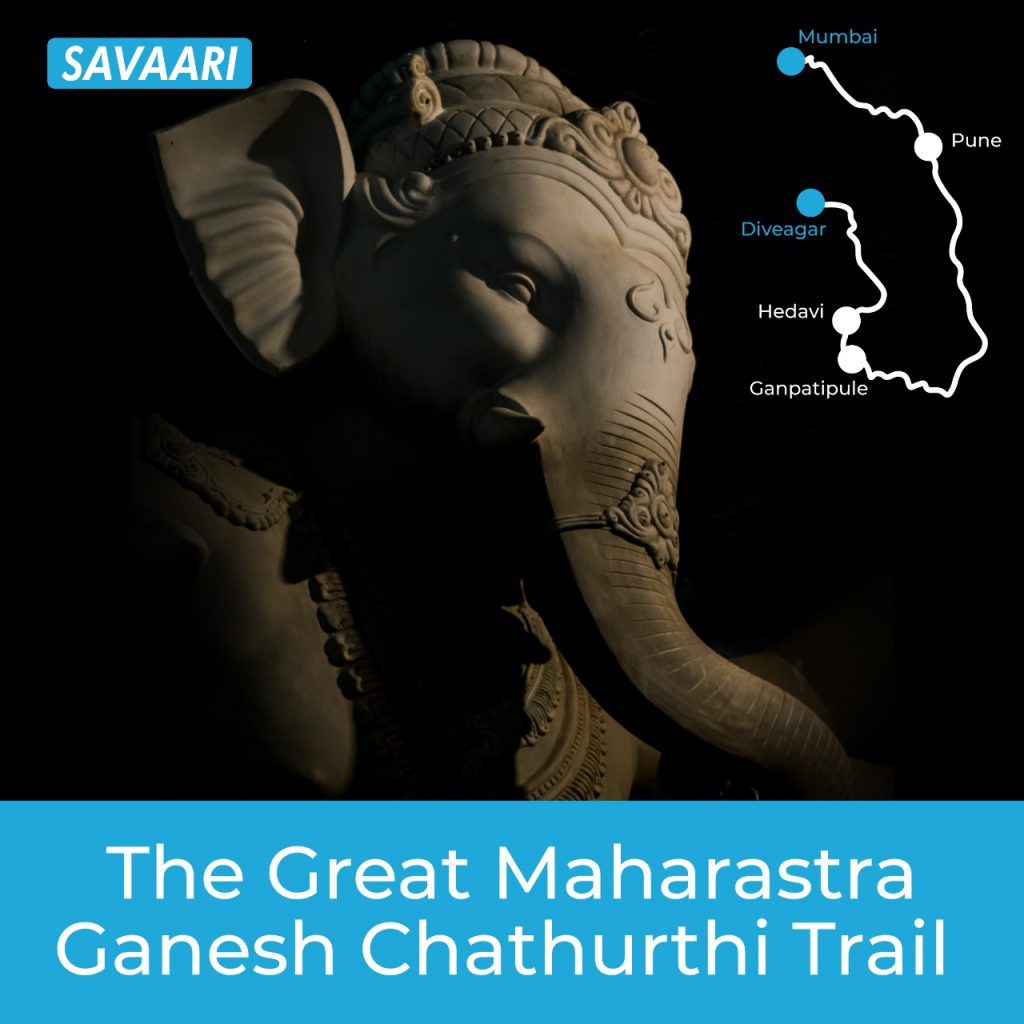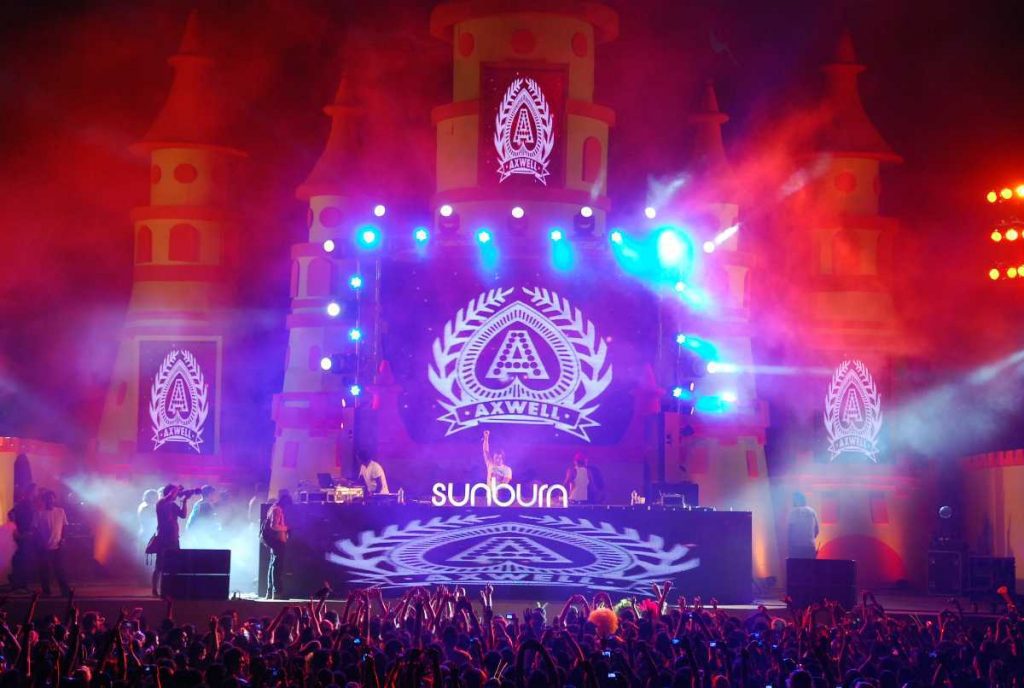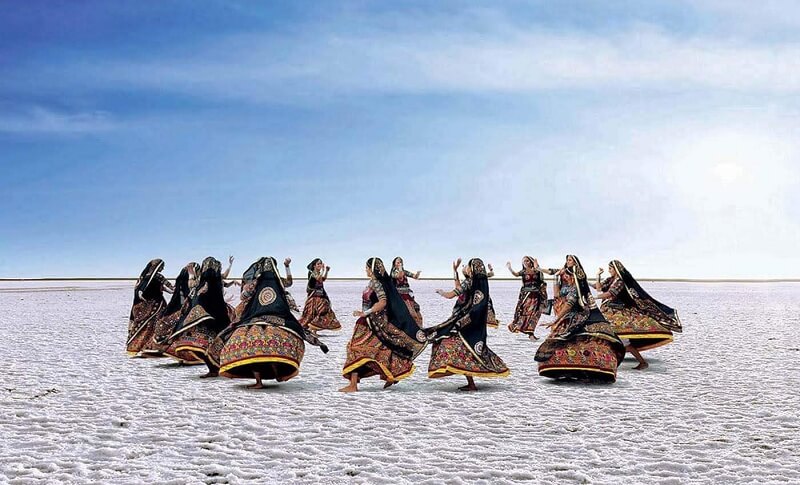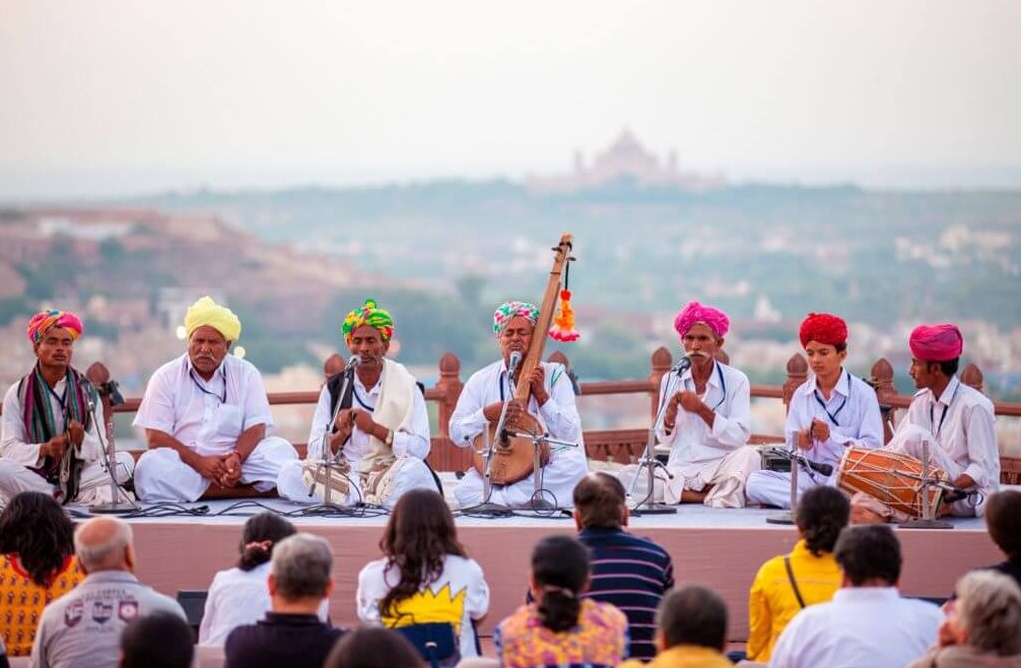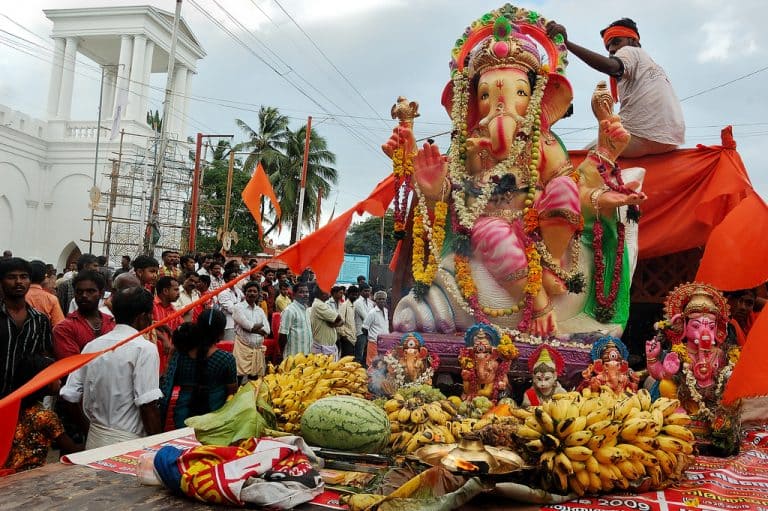
Ganesh Chaturthi is a Hindu festival celebrated every year. This festival, also known as Vinayaka Chavithi, honours the birth of Lord Ganesha in the Hindu calendar’s Bhadra month, which runs from August to September. This celebration is known as Vinayaka Chavithi or Vinayaka Chaturthi in popular culture. About ten days of festivities culminate on Anant Chaturdashi, the fourteenth day of the waxing moon phase. It is held in honour of Lord Ganesha, the elephant-headed deity revered as the god of beginnings, wisdom, and the removal of obstacles.
During Ganesha Chaturthi, clay representations of Ganesha are placed in pandals or private residences, where they are worshipped for up to ten days before submerging in a water body. During this festival, Ganesha is said to grant all of his devotees his physical presence on earth. The festival is celebrated all over India, particularly in Maharashtra, with blustering zeal and ecstasy. Let’s trace the history of Ganesh Chaturthi, and how it became a worldwide phenomenon.
In 2023, Ganesh Chaturthi will be celebrated on September 19, and Ganesh Visarjan (Anant Chaturdashi) on September 28.
The Legend of Ganesh Chaturthi
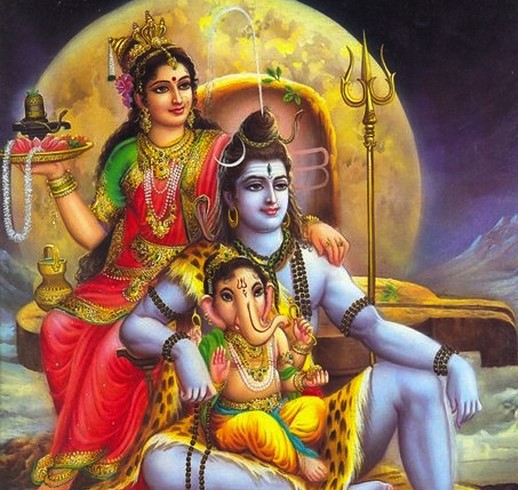
There are many legends surrounding the celebration of Ganesh Chaturthi. The most well-known of these are related to Lord Shiva and Parvati. According to legend, Parvati used sandalwood to create Ganesha while her husband, Shiva was away. She designated Ganesha to watch over her house’s entrance while taking a bath. When he returned, Ganesha blocked Shiva from entering the building, eager to meet Parvati. This caused the two of them to fight. He initially makes vain attempts to persuade the boy. Shiva, the god of destruction, finally cuts off Ganesha’s head.
When Parvati caught sight of this scene, she transformed into the goddess Kali and declared that she would end the world. Everyone was concerned about this and prayed to Lord Shiva to find a solution and subdue Goddess Kali’s rage. Shiva then commanded all his followers to run off and find a child whose mother was neglectful, turning her back on her child and bringing his head. The followers saw the first child as an elephant, so they cut off his head and brought it to Lord Shiva as instructed.
The head was immediately placed on Ganesha’s body by Lord Shiva, who then revived it. Goddess Parvati was once more overpowered as Maa Kali’s rage subsided. Ganesha or Ganapati, the chief of the ganas or the attendants of Shiva, was given a warm welcome into the first family of the Hindu heavens and given the elephant-headed god’s name. The most important god in the Hindu pantheon is Ganesha. This valiant doorkeeper for Parvati’s bath is revered as the most auspicious deity of fresh starts. He is worshiped before people travel or start a new project and during all festivals. You will also see him carefully guarding entrances to temples and homes, peeping out of calendars and happily gracing marriages and other such occasions.
[Also Read: How it’s Done: Ganesh Chaturthi in Pune]
The History of Ganesh Chaturthi Celebrations in India
History of Ganesh Chaturthi During the Maratha Empire

India’s links to the festival date back hundreds of years, with references to Ganapati being found in the Rigveda. The earliest Ganesh Chaturthi celebrations, according to historian Shri Rajwade, date back to the eras of the Satavahana, Rashtrakuta, and Chalukya dynasties.
According to historical accounts, the great Maratha ruler Chatrapati Shivaji Maharaja started Ganesh Chaturthi celebrations in Maharashtra to advance culture and nationalism. Since then, it has continued. History has also made mention of celebrations akin to these during the Peshwa era in Pune. Lord Ganapati is thought to have been the Peshwas’ family god. Ganesh Chaturthi continued to be a family celebration in Maharashtra following the end of Peshwa rule from 1818 to 1892.
[Also Read: Ganesh Chaturthi food guide – Ganesha loves food, so should you]
History of Ganesh Chaturthi During India’s Freedom Struggle
History of Ganesh Chaturthi in the freedom struggle began in 1892, when a Pune citizen named Krishnajipant Khasgiwale travelled to Maratha-ruled Gwalior and watched a traditional public festival, which he drew to the attention of his companions Bhausaheb Laxman Javale and Balasaheb Natu back in Pune. Javale, also known as Bhau Rangari, then installed the first sarvajanik, or public Ganesha idol, and held gatherings to celebrate Lord Ganesha.
However, as the British took over large swaths of India, the festival lost its public nature and state patronage. It was only a private celebration held by a few people in Maharashtra for a time. All of this changed when Indian freedom fighter Lokmanya Tilak championed the festival as a means of uniting Indians and instilling national pride. Tilak fought to make the Ganapati festival a social event for the entire Hindu community as the British banned public assemblies and cracked down on sedition.
In an article in his newspaper Kesari in 1893, Lokmanya Tilak complimented Javale’s efforts. He even erected a Ganesha statue in the news publication’s headquarters the following year, and his efforts transformed the yearly family festival into a significant, well-organized public event. Tilak was the first to build big public representations of Ganesha in pavilions, and he began the practice of immersing the idols on the tenth day of the celebration in rivers, the sea, or other bodies of water.
Ganesh Chaturthi, encouraged by him, became a meeting place for people of all castes and communities when the British prohibited social and political meetings to control the populace. The event encouraged community involvement and participation in intellectual dialogue, poetry recitals, plays, concerts, and traditional dances. Even Muslim leaders attended these annual gatherings and offered speeches exhorting citizens to strive for independence.
Tilak acknowledged Ganesha’s appeal as “the god for everyone.” He popularised Ganesh Chaturthi as a national festival to “cross the divide between Brahmins and ‘non-Brahmins’ and find a framework to build a new grassroots unity amongst them,” fostering nationalistic fervour in the Maharashtra people in opposition to British colonial control.
Since then, Ganesh Chaturthi has been celebrated with enormous community excitement and participation throughout Maharashtra and other states. It was declared a national festival following India’s independence in 1947. Ganesh Chaturthi is now celebrated throughout Maharashtra, Tamil Nadu, Karnataka, Andhra Pradesh, and many other places in India. Because the celebration is so popular, preparations begin months in advance. Homes are cleaned days before the actual worship, and marquees are built on street corners to host the Lord’s idols. Lighting, decorating, mirrors, and flowers are all elaborately arranged.
The artisans who create Ganesh idols compete to create larger and better sculptures. The relatively larger ones have heights ranging from 10 metres to 30 metres. The Lord is worshiped with great devotion during the festival days, and prayer services are held regularly. Modak and neuri, as well as other sweet and savoury treats, are relished and distributed. The length of the Lord’s visit varies by location; once the devotion is finished, the statues are taken on ornate floats and drowned in the sea. Thousands of people gather on the beaches to immerse the sacred idols in the sea.
Dancers and the sounds of frenetic drum beats, devotional music, and exploding firecrackers accompany the procession and immersion. The ceremony concludes with shouts of “Ganesh Maharaj Ki Jai!” (Hail Lord Ganesh!) when the idol is immersed, and with requests to the Lord to return the next year, with chanting of “Ganpati bappa morya, pudcha varshi laukar ya” (Hail Lord Ganesh, return soon next year). Tourists from all over the world go to Maharashtra’s sun-kissed beaches to see this amazing spectacle. Book a local cab in Mumbai to witness the festivities in all their glory.
The Ganesh Chaturthi Trail – Pandals to witness the celebrations in Mumbai
Check out this for a list of destinations one could visit to join in the celebrations. Here’s the list:
| Place | Pandals |
| Diveagar, Maharastra | Visit the 300-year old Suvarna Ganesh Temple that houses a pure gold idol of Lord Ganesha. |
| Hedvi | Visit the Ganesh Temple of Hedvi, considered to be a ‘Jagrut Devasthan’ where you can feel the presence of Lord Ganesha. |
| Ganpatipule | Visit the 400-year-old Swayambhoo Ganesh temple, which is located on the shores of a pristine sandy beach. |
| Pune | The must-visit Ganpati Pandal here is Dagdusheth Halwai Ganpati where you can find replicas of famous Indian monuments and temples. |
| Mumbai | Some of the famous Ganesh Chaturthi Pandals here include Lalbaughcha Raja and Siddivinayak Temple. The major place for immersion of idol is Chowpatti Beach. |
Here are some of the famous Ganpati pandals from various cities
| Ganpati pandals | About |
| Dagdusheth Halwai Ganpati, Pune | Dagdusheth Halwai Ganpati, located in Pune, Maharashtra, is celebrated for its enchanting decorations and the colossal idol of Lord Ganesha that captivates the hearts of its devotees. Founded in the late 19th century by the renowned sweet merchant Dagdusheth Halwai and his wife Lakshmibai, this temple boasts a captivating history and a lasting legacy that continues to draw millions of worshippers annually. The temple’s central deity is an opulent 2.2-meter-tall gold idol of Lord Ganesha, embellished with precious jewels. |
| Manache Ganpati, Pune | Located in Pune, Maharashtra, Manache Ganpati holds a distinctive and revered position among the numerous Ganesh temples within the city. “Manache Ganpati” translates to “Respected Ganpati” in Marathi, and it is the term used to denote a cluster of eight Ganesh temples that are traditionally venerated in a specific sequence during the Ganesh Chaturthi festival. |
| Khairatabad Ganapathi, Hyderabad | During Ganesh Chaturthi in Hyderabad, the Khairatabad Ganapathi pandal is a truly mesmerizing spectacle. This pandal features a colossal Lord Ganesha idol painstakingly crafted by skilled artisans. Towering at approximately 60 feet in height, this awe-inspiring idol magnetizes throngs of devotees and tourists alike during the Ganesh Chaturthi festival. The tradition of erecting the Khairatabad Ganapathi idol traces its origins back to 1954, initiated by the late S. Shankarayya, a local freedom fighter and social activist. |
| Shree Sarvajanik Ganeshotsav, Goa | In Goa, the Shree Sarvajanik Ganeshotsav pandal is renowned for its deep religious devotion and cultural importance. The pandal’s vibrant decorations and intricate rituals are a magnet for both devotees and tourists. Notably, a recent trend has emerged where many pandals are opting for eco-friendly Ganesha idols and decorations. |
| Mysore Palace, Mysuru | Mysore Palace Ganpati observes Ganesh Chaturthi with grandeur and regal opulence, infusing a touch of royal splendour into the celebrations. The Mysore Palace Ganpati pandal is truly a sight to behold, bedecked with intricate decorations, vibrant illuminations, and traditional motifs, adding to the allure of this majestic event. |
| RK Math, Kolkata | RK Math, situated in Kolkata, stands as an iconic institution that observes Ganesh Chaturthi with profound fervor and devotion. During the Ganesh Chaturthi festival, the tranquil surroundings of RK Math transform into a vibrant hub of celebrations, combining spirituality with festive enthusiasm. |
| Sri Vinayaka Devaru Temple, Bengaluru | Devotees flock to the Sri Vinayaka Devaru Temple during the ten-day festival, eager to seek blessings and offer their prayers to Lord Ganesha. Within the temple, the air resonates with the melodious tunes of bhajans and devotional songs, creating an atmosphere filled with spiritual fervor and exuberant celebrations. |
Rent a car in Pune and conveniently cover your religious circuit without any difficulties. Visit the manaches and gather the blessings of Lord Ganesha. In case you want to explore the picturesque getaways near Pune, you may want to take a trip to Mahabaleshwar or Lonavala.
Last Updated on January 18, 2024 by Swati Deol

